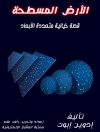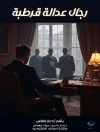In ‘Norse Tales and Sketches, ‘ Alexander Lange Kielland artfully weaves together a collection of stories that delve into the rich tapestry of Norwegian folklore and mythology. Written during the late 19th century, a period marked by burgeoning nationalism and a revival of interest in cultural heritage, Kielland’s style is characterized by vivid imagery and intricate character development. The narratives reflect a deep engagement with the social and moral issues of his time, capturing both the whimsical aspects of Norse mythology and the more profound themes of human experience and existential inquiry. Kielland was a central figure of the Norwegian literary scene, closely associated with the Naturalism movement. His background as a prominent politician and social reformer deeply influenced his literary voice, as he sought to address the challenges of modernity and societal change. His familiarity with Norwegian culture and mythology, combined with his commitment to social realism, enabled him to craft tales that resonate with both historical significance and timeless appeal. This book comes highly recommended for readers interested in the intersections of folklore and social commentary. Kielland’s mastery of language and storytelling makes this collection not only an enriching read but also a vital contribution to the understanding of Norway’s cultural narrative. Dive into these tales to explore the enduring spirit of the Norse tradition, reflected through the eyes of one of its most articulate modern chroniclers.
लेखक के बारे में
Alexander Lange Kielland (1849-1906) was a prominent Norwegian realist writer, hailing from one of the most distinguished families in Stavanger. Educated in law and literature, his literary career saw him as a central figure in the 19th-century Modern Breakthrough movement. Kielland’s pointed social critique and sharp wit carved out a distinct place for him alongside Henrik Ibsen, Bjørnstjerne Bjørnson, and Jonas Lie in the Scandinavian literary canon. His works often mirrored the societal structures of his times, and he never shied away from addressing middle-class hypocrisy, materialism, and the class disparities that permeated Norwegian society. ‘Norse Tales and Sketches’ is a testament to his narrative prowess, remarkable for its keen observations and the sleek irony that characterizes much of Kielland’s oeuvre. His linguistic precision and engagement with contemporary moral debates mark Kielland’s writing with a timeless quality, rendering his works as relevant today as they were at the time of their publication. While Kielland’s literary production was relatively modest, his novels and short stories like ‘Gift’ (Poison), ‘Skipper Worse’, and ‘Garman & Worse’ leave an indelible footprint on the terrain of Norwegian literature, illuminating the subtleties of human character and the social landscapes of the late 19th century.












